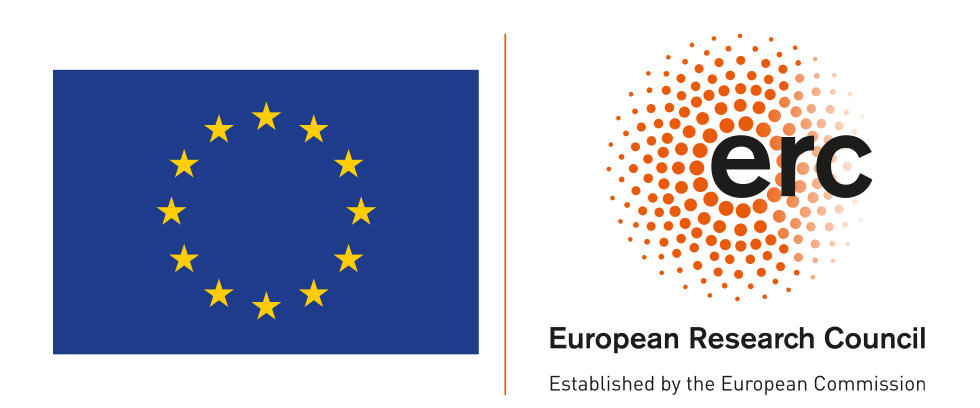Project ID: 307964
Funded under: FP7-IDEAS-ERC
From 2013-01-01 to 2017-12-31, closed project
Project details
| Total cost: | EUR 1'483'967 |
| EU contribution: | EUR 1'483'967 |
| Topic(s): | ERC-SG-PE2 - ERC Starting Grant - Fundamental constituents of matter |
| Call for proposal: | ERC-2012-StG_20111012 See other projects for this call |
| Coordinated in: | Italy |
| Funding scheme: | ERC-SG - ERC Starting Grant |
Objective
High order harmonics are generated when molecules are ionized by an intense femtosecond laser pulse. The freed electron is accelerated in the external driving electric field and, because of the periodic oscillation of this field, is brought back to the parent ion, where it can recombine and give rise to the emission of an XUV photon. This XUV harmonic radiation has been shown to contain information on the electronic structure of the molecule, which can be interpreted as a picture of the molecular orbital. The idea of exploiting high order harmonic generation (HHG) for the tomographic reconstruction of the electronic structure in molecules was first introduced in 2004 for nitrogen molecules. Up to now, despite several attempts, a successful investigation of the molecular structure by HHG was still lacking for molecules more complex than N2. Recently I demonstrated a new experimental and theoretical approach for extending the imaging of molecular orbitals to a triatomic molecule. However, the real breakthrough in molecular imaging, namely the achievement of a time-resolved tomography providing a movie of the wavefunction of molecules while undergoing structural changes, has not yet been attempted.
The goal of this project is to develop time-resolved HHG tomography for real-time imaging of evolving electronic structure in complex molecules undergoing electronic or vibrational excitation.
The key idea of UDynI is to use a mid-IR (1.3-1.8 µm) few-cycle laser source to drive the harmonic generation process. This will allow tackling the limitations that prevented up to now the realization of time-resolved tomography of complex molecules during molecular rearrangement.
I will mainly consider organic molecules, such as hydrocarbons, hydrocarbons with functional groups and aromatic hydrocarbons, which are interesting precursors for the study of biological functions.
Final Report Summary
High-order harmonics are generated when molecules interact with intense and very short laser pulses. Since light is a periodically oscillating electromagnetic field, the outermost electron of the molecule is ionized by the intense laser field, then accelerated in the continuum and brought back to the molecular ion where it may recombine, emitting extreme ultraviolet (XUV) radiation. The spectrum of this radiation shows periodic peaks called high-order harmonics and can be thought of as a "radiography" of the molecule taken from the direction of electron collision and carrying information on its external electronic structure, also known as Highest Occupied Molecular Orbital (HOMO).
However molecules are tridimensional objects, calling for a "tridimensional picture" (i.e. a tomography) of the HOMO. A HOMO tomography can be obtained by taking several "pictures" of the molecule from different directions and combining all the results. In practice, with suitable all-optical techniques it is possible to align molecules in the laboratory frame and then, by acquiring harmonic spectra at different angles of electron collision, interpret the information retrieved as the HOMO tomography. It is worth noting that the HOMO is the key structure determining how molecules interact with the surrounding environment.
The Udyni project has the ambitious goal to exploit this effect for imaging in real-time the evolution of molecular orbitals after molecular excitation, thus shooting the so-called “molecular movie”. We established a new laboratory for performing molecular imaging, by implementing innovative state-of-the-art instrumentations and methodologies. We built a high-energy pulsed mid-infrared laser source capable of generating high-order harmonics in the molecular targets at a high repetition rate. Such pulses are ideal for extending the tomography of molecular orbitals to fragile and complex molecules. We demonstrated the application of molecular orbital tomography to simple hydrocarbons, like acetylene and ethylene, showing the applicability of this technique to organic compounds. The intrinsic complexity of this method has hindered so far its wide exploitation. During the Udyni project, we developed novel experimental and theoretical approaches in collaboration with several international groups and we are now very close to the realization of a "molecular movie" with unprecedented temporal and spatial resolutions.

This project has received funding from the European Union’s Seventh Framework Programme for research, technological development and demonstration under grant agreement No 307964
